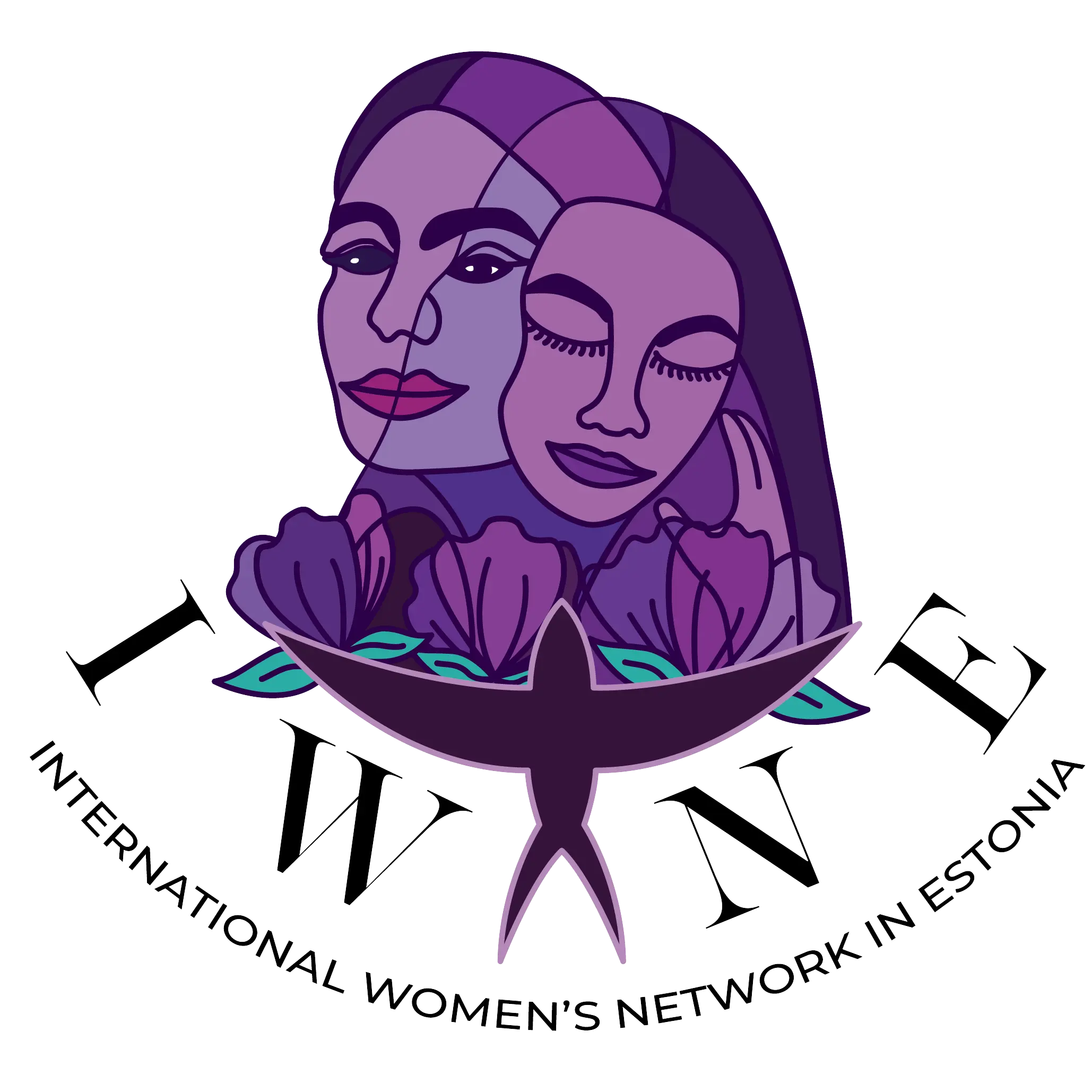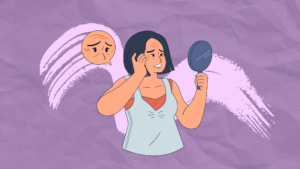Disclaimer:
This article provides a general legal overview of child custody regulations in Estonia, particularly addressing issues that may arise for migrant women. It is based on publicly available legal sources, including Estonian and EU legislation, case law, official guidelines, and academic analyses. The information provided here does not reflect any specific individual case, nor does it advocate for or justify any form of child removal. Forcible removal of children from parents is recognized under Estonian law as a measure of last resort, applicable only in extreme circumstances of proven danger or abuse. Every custody decision is highly individual and must be determined by the competent court in the best interests of the child. This article aims to provide objective legal information and is not intended to replace personalized legal advice.
What is custody and the different types of custody in Estonia?
Custody is the duty and the right of a parent to take care of their minor child and their child’s property, as well as to represent them. Custody can be physical/legal and sole/joint. Physical custody determines the child’s primary place of residence, while legal custody determines who has the authority to make major decisions on behalf of the child. Joint custody allows both parents to share rights and responsibilities. Sole custody grants one parent the rights of the child. Having sole custody gives one parent legal and/or physical custody of the child. In cases of sole physical custody the other parent may have visitation rights.
A child has the right to maintain personal contact with both parents. Both parents also have the right to maintain personal contact with their child. This is referred to as the right of access. This right pertains to the right of a parent to take a child for a limited period of time to a place other than the child’s habitual residence. Thus, in the case when the mother has sole custody, the father can still have the right of access and the mother should refrain from any action which is harmful to the relationship between the child and the father (art 143(2) FLA).
What are the custody arrangements in the case of divorce of the parents?
According to Regulation (EC) 2201/2003 (Brussels II Regulation) that is applied in Estonia, the divorce of an international couple will be handled by the Estonian courts applying Estonian law in cases when the spouses reside in Estonia or have last resided in Estonia and one of the spouses still resides there. Thus, in case a migrant woman is married to an Estonian man their divorce will be handled in an Estonian court and Estonian law will be applicable to the divorce even if the woman moves back to her home country. However, according to article 5 of the Rome III Regulation (Council Regulation (EU) No 1259/2010) the spouses can choose the applicable law of the migrant woman’s nationality. This agreement has to be in writing and signed. But it should be taken into account that the choice will not be respected if it is manifestly incompatible with the public policy of the forum state (Estonia in this case).
In Estonia matters related to divorce and custody of children are regulated by the Family Law Act (FLA). According to the Act both parents have a right of custody (art 116(1) FLA). Parents that are married have joint custody over their child, which means they should jointly decide on essential matters relating to the child. In case parents are not married at the time the child is born they have joint custody unless they have expressed the wish to have a different custody arrangement. It is possible for the woman to receive sole custody, if both parents agree to such terms by submitting the declarations of intention concerning the acknowledgement of paternity (art 117(1, 2) FLA).
The parents can decide themselves how the custody rights are to be exercised. Any change in the rights of custody, including the termination of joint custody, is possible only through the courts. In the case the child is over 14 years old the court will dismiss the petition of the parent requesting the transfer of custody in case the child objects, so the age of the child is an important variable. Additionally, consideration is given to such factors as the mental and economic readiness of the parent to raise the child, their spiritual connection with the child, and their previous commitment to caring for the child, as well as the child’s future living conditions, his/her wishes depending on age and the ability of the parents to cooperate with each other.
Despite the fact that custody arrangements can be agreed upon between the parents, the courts consider the interests of the child first and foremost. Practice shows that it is in the best interests of the child that he/she is cared for by both parents as the natural environment for the development and growth of children is the family. For example, in Civil Case No 208-89161 the court refused to terminate joint custody as the parents’ wishes are overridden by the considerations of the best interests of the child and they have priority over the principle of equality of rights of the parents. The courts have also considered it to be in the best interests of the child for siblings to grow up together as can bee seen, for example, from Civil Case No. 2-11-14383, so it can be impossible for a mother to establish sole custody over one child, while the father establishes sole custody over the other as separating them would be against their best interests.
Parents can also use the national family mediation service in order to reach an agreement. The national family mediation service is intended for parents who have minor children together and who have failed to reach an agreement on matters relating to custody. The national family mediation service is free of charge for parents and in order to access it they must contact the Social Insurance Board (Sotsiaalkindlustusamet). The outcome of the family mediation process is a parenthood agreement signed by the parents and approved by the Social Insurance Board; it is an enforceable instrument.
How does international visitation work?
A child can have alternating residence, which means that the child lives an equal amount of time with each of the parents. In case the migrant parent stays in Estonia this solution can be chosen. However, if both parents live in different countries such arrangement can become extremely burdensome and an alternating residence becomes not in the child’s best interests as the distance between the parents’ residences is too large. In that case the child of at least 10 years old will be heard in a matter concerning the residence; the child’s age and character will also be taken into account. The court may also hear a younger child.
In cases where one of the parents lived abroad, sole custody of the child(ren) was granted to one parent by the court. However, the fact that one of the parents (and the child) lives abroad does not always mean that sole custody will be transferred to them, especially if the other parent is very interested in participating in the child’s life and upbringing. It is important that the parent who wants to live abroad with the child proves that the child has good living conditions in the foreign country and that the parent is financially prepared to raise the child. The court has to be able to assess the circumstances in which the child would live abroad. Thus, the petition for granting of sole custody can be rejected if the mother is moving for work but is not yet sure if she will be able to settle in the new country and provide good living conditions for the child.
The consent of the other parent has a substantial effect on the decision of the court to grant sole custody to the parent living abroad. For example, in Civil case No. 2-10-63167 the defendant agreed to the divorce and to the transfer of custody of the children to the applicant and it was granted by the court.
In contrast with this case, in Civil case No. 2-10-10898 the child was residing with the mother as long as she stayed in the Republic of Estonia. However, when she wanted to move to Finland she requested the court to grant her sole custody. In the event that the court does not agree to the transfer of sole custody, she requested that she be given sole decision-making rights in the matter of the place of residence and schooling of her daughter and that joint custody be terminated in this regard. The child’s father did not agree and did not give his consent for the child to settle in Finland and claimed it was not in the best interests of his daughter as the child would lose the close emotional ties with the father and paternal grandparents. Since the father had a strong interest in participating in the life and upbringing of the child, the court considered it justified to only transfer part of the custody to the mother under art 137(1) FLA.
According to the Child Protection Act (CPA) a child whose parents reside in different states has the right to direct contacts and personal relations with both parents. As such, for the purpose of family reunification, the child or his or her parents have the right to freely leave the Republic of Estonia or enter the Republic of Estonia pursuant to the established procedure (art 30 CPA).
As both the child and the parent have the right to communicate, it is enforced regardless of whether the parent has custody of the child or not. This is done especially to preserve personal relationships between the parent and the child, and also done in cases when the parents have joint custody, but one parent does not live with the child.
The child also has a right to know their origin and their parents. Thus, if a parent is unable to provide the child with information about his or her origin for personal reasons, although this would obviously be in the child’s best interests, and unreasonably prevents the other parent from communicating with the child, thereby harming the child’s well-being, the court must find a way to ensure the child’s well-being. If the parent refuses to cooperate with the court and continues to oppose the child finding out who the other parent is and does not support the communication between the child and the other parent, the court can restrict the right of personal custody of the parent living with the child, taking away the parent’s right to decide on the matter concerning the communication between the child and the other parent. This means that, for example, in case a woman returned back to her home country while pregnant and decided to have and raise the child there, the child has the right to know his/her father, communicate with him and keep contact with that side of the family. If the mother unreasonably restricts this communication it can be mandated by the court and in some cases a special guardian is appointed to ensure that the child gets to know the other parent (section 209(1) CPA).
What is maintenance support?
A minor child has the right to receive support from their parents which imposes an obligation on a parent who does not reside with the child or participate in the upbringing of the child to pay maintenance support (art 97 FLA), which would cover half of the child’s expenses. This money must be used in the child’s best interest by the parent receiving the support.
- In case both parents stay in Estonia:
Parents can agree on the maintenance support based on proportionality of the child’s expenses, because any agreement that restricts the maintenance obligation beyond reason will be considered null and void. However, the situation of the person obligated to pay maintenance support is taken into account (art 102 FLA). If the agreement is concluded in writing by notarial deed it is enforceable by an enforcement agent without a need for court proceedings. In case of disagreement on the maintenance obligation, the parent that has custody over the child must enforce the child’s right to maintenance support through a court by obtaining a judicial decision. Similarly, in case the situation changes alterations to the amount of support can be made by filing a claim.
While the judgement is awaited the child can receive maintenance allowance from the court. It can also be received from the state in case the debtor does not meet their maintenance obligation while the enforcement agent is recovering the payments and the debt. The application can be made on behalf of the child through a state portal online.
- In case the debtor moves abroad:
If a parent that is obligated to pay maintenance support moves abroad the obligations will still be enforced through a petition to the Estonian Ministry of Justice together with a power of attorney authorising a suitable Estonian enforcement agent to mediate maintenance support from a foreign state.
- In case the creditor moves back to the country of nationality:
The Hague Convention on the International Recovery of Child Support and Other Forms of Family Maintenance may be applicable to international maintenance enforcement depending on the country of the migrant parent’s nationality and whether that country has signed it. The Court in the state of the migrant woman’s nationality has jurisdiction to decide on maintenance claims. Under article 15 of this Convention the requested State shall provide free legal assistance in respect of all applications by a creditor concerning maintenance obligations arising from a parent-child relationship towards a person under the age of 21 years. After the judgement has been obtained it is directly enforceable in Estonia (art 19).
What happens in the case of abuse?
It is crucial to understand that the interests of the child will be primarily taken into account by the court when deciding on matters relating to custody arrangements. Thus, in cases of abuse by a parent provisions on endangering the well-being of a child come into effect (art 134 FLA). These provisions focus largely on the safety of the child rather than the mother, but can, however, guarantee the abuser will be deprived of the right to custody in full (art 135(2) FLA). It is important to know, however, that the court can also terminate the application of measures restricting a parent’s right of custody if the interests of the child are no longer in danger (upon the application of the parent).
If the violence of a parent is proven (usually by the opinion of the child’s representative, the opinion of a local government representative, the opinion of a psychologist, or a decision made in a criminal case), the Estonian courts most often grant sole custody to the parent who has not been violent. In case parents have joint custody it is usually also terminated if a parent has been violent towards the other parent. For example, the Estonian Supreme Court stated in the case No. 3-2-1-4-07 that parental rights may be terminated if a parent has a harmful effect on a child. A harmful effect on a child is not only a parent’s violent or threatening behaviour towards the child but that it may also be violent or threatening behaviour towards people close to the child, if the child so perceives it. Such decision by a court can indirectly protect the child’s mother from abuse and ensure the right to sole custody, however the application of Estonian laws prohibiting domestic violence remains a challenge.
It is clear that the existing protections are insufficient, especially for migrant women. Migrant women trying to divorce their abusive Estonian partners have several things to consider, such as immigration status and financial capabilities to care for the child in case of obtaining sole custody. Migrant women in the EU generally have a higher unemployment rate than both non-migrant women and migrant men. For those women with young children, the employment rate is significantly lower for migrant than non-migrant women. In Estonia the gender pay gap also affects the migrant-population. These factors make it significantly harder to leave an abusive relationship and obtain custody over the child/children.
Based on this the question arises about what women can do to ensure their own safety and the safety of their children. The most prominent question is whether the mother can simply take the child and return to her home country.
What is child abduction?
Child abduction is the unauthorised removal or retention of a minor from a parent or anyone with legal responsibility for the child. Estonia has signed the Hague Convention on the Civil Aspects of International Child Abduction (1980) which aims at promptly returning the child to the parent in case of wrongful removal and ensuring the rights of custody and access are ensured.
This can happen in case, for example, a parent wants to travel abroad with the child and the other parent refuses to give consent. If the refusal of consent is not justified it is possible to apply to the court for a one-time decision-making right to go on a specific trip with the child (location and date of the trip should be highlighted in the application as well as why the travel is in the best interests of the child). If the trip is frequent and the issue of consent is recurring, or if the parent living separately also creates unjustified obstacles on other issues, it may be appropriate to transfer custody rights to the parent living with the child for the issues that cause problems. This is also done through the court. However, if one parent takes the child to a country that has not been the child’s habitual residence to date without the consent of the other parent, the other parent can request the return of the child to the former place of residence under the Convention.
The case Neulinger and Shuruk v. Switzerland (2010) set a precedent that courts must also take into account the child’s interests before enforcing the return of the child. Thus, in a case a former partner is abusive towards the child and his/her return to that parent would pose a danger to their life or health, the mother can potentially take the child in order to ensure his/her safety and return to her home country. Similarly, in case the father refuses to return the child to the mother after visitation, the Hague Convention will be applied in order to promptly return the child to the mother and enforce the custody arrangements.
How do child protective services operate in Estonia?
The child and the parents may not be separated against their will, unless the separation is in the best interests of the child, or the child is in danger of distress and the separation is unavoidable, or the separation is required by law or by an enforceable or immediately enforceable court order. Thus, in cases where leaving the child in the family endangers the health or life of the child, a rural municipality government or city government may separate the child from the family before a court ruling is made (art 135(4) FLA).
Where a child has been placed at risk by his or her family, and there is no other way of averting the risk, separation of the child from the family may be justified. Suspected offences against children (including physical or sexual violence; neglect endangering life and health; etc.) are grounds for initiating criminal or misdemeanour proceedings. Therefore, CPS can only potentially take away the child from the mother in cases of abuse or danger to the child.
In certain cases the opinions of the child’s representative and the Guardianship office may differ on whether the joint custody should be terminated or maintained. In Civil case No. 2-11-52131 the child’s representative asserted that a problem of alcohol abuse and violent behavior was not a problem with the children but rather with the relationship between the parents and there should be no change in the issue of parental custody to maintain relationship between siblings while the Guardianship Office was of the opinion that, since the child’s father had seriously harmed the child’s interests and well-being by his behaviour, the parents’ joint custody should be terminated and the custody transferred to the child’s mother.
Bibliography
European Commission. (n.d.). Parental responsibility, child custody and contact rights. https://e-justice.europa.eu/topics/family-matters-inheritance/parental-responsibility-child-custody-and-contact-rights_en
European Commission. (n.d.). Parental responsibility, child custody and contact rights – Estonia. https://e-justice.europa.eu/topics/family-matters-inheritance/parental-responsibility-child-custody-and-contact-rights/ee_en
European Migration Network. (2021). Integration of Migrant Women in the EU and Norway: Policies and Measures – Estonian National Report. https://migrant-integration.ec.europa.eu/system/files/2022-06/estonian_national_report_on_integration_of_migrant_women_estonia.pdf
European Court of Human Rights. (2010). Case of Neulinger and Shuruk v. Switzerland. https://hudoc.echr.coe.int/eng#{%22itemid%22:[%22001-99817%22]}
Republic of Estonia. (2014). Child Protection Act. https://www.riigiteataja.ee/en/eli/531102014002/consolide
Republic of Estonia. (2013). Family Law Act. https://www.riigiteataja.ee/en/eli/530102013016/consolide
Social Insurance Board of Estonia. (2023). A Parents Guide: Information and Support for Separating Families with Children. https://www.sotsiaalkindlustusamet.ee/sites/default/files/documents/2023-03/a_parents_guide_information_and_support_for_separating_families_with_children.pdf
Supreme Court of Estonia. (2007). Case No. 3-2-1-4-07. https://www.riigikohus.ee/et/lahendid?asjaNr=3-2-1-4-07
European Union. (2011). Convention on the International Recovery of Child Support and Other Forms of Family Maintenance. https://eur-lex.europa.eu/eli/convention/2011/432/oj/eng
Hague Conference on Private International Law. (1980). Hague Convention on the Civil Aspects of International Child Abduction. https://www.hcch.net/en/instruments/conventions/full-text/?cid=24
European Union. (2003). Regulation (EC) 2201/2003 (Brussels II Regulation). https://eur-lex.europa.eu/legal-content/EN/TXT/PDF/?uri=CELEX:32003R2201
Claudius Law. (n.d.). Vanemate ja lapse õigussuhe: hooldusõiguse muutused, ainuhooldusõigus, suhtlusõigus, otsustusõigus, lapse huvid. https://www.claudiuslaw.com/et/oigusblogi/44-vanemate-ja-lapse-oigussuhe-hooldusoiguse-muutused-ainuhooldusoigus-suhtlusoigus-otsustusoigus-lapse-huvid#Vanema%20elukoha%20t%C3%A4hendus%20%C3%BChise%20hooldus%C3%B5iguse%20l%C3%B5petamisel.%20M%C3%B5lemad%20vanemad%20elavad%20Eestis%20v%C3%B5i%20%C3%BCks%20vanematest%20elab%20v%C3%A4lisriigis/tahab%20elama%20minna%20v%C3%A4lisriiki%20%E2%80%93%20maa-%20ja%20ringkonnakohtute%20seisukohad
Claudius Law. (n.d.). Hooldusõigus, otsustusõigus, suhtlemiskord – olulisi Riigikohtu seisukohti. https://www.claudiuslaw.com/et/oigusblogi/2-blog/36-hooldusoigus-otsustusoigus-suhtlemiskord-olulisi-riigikohtu-seisukohti
Lillsaar, M. (2013). Hooldusõiguse lõpetamine ja üleandmine: analüüs. https://www.riigikohus.ee/sites/default/files/elfinder/analyysid/2013/hooldusoiguse_lopetamine_ja_yleandmine_analyys_m.lillsaar.pdf
Estonian Union for Child Welfare. (n.d.). Abivajavast lapsest teatamine ja andmekaitse – juhend. https://www.eatl.ee/wp/wp-content/uploads/abivajavast_lapsest_teatamine_ja_andmekaitse_juhend.pdf










